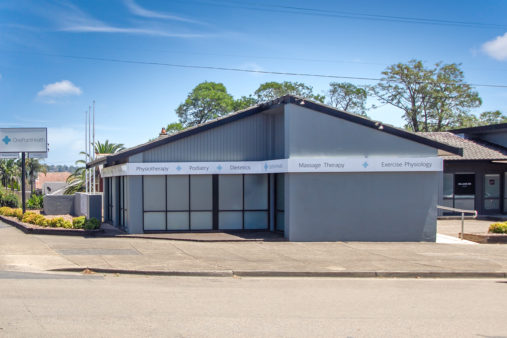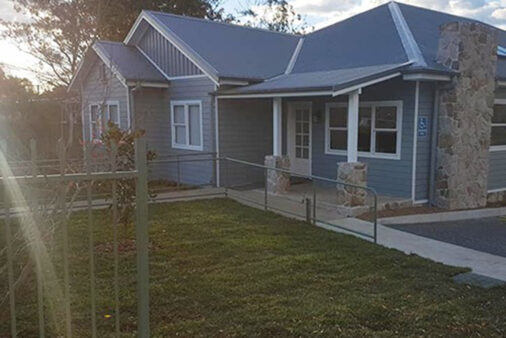Is osteoarthritis slowing you down? At OnePointHealth, our experienced physiotherapists create personalised treatment plans to get you moving comfortably again.
What is Osteoarthritis?
Osteoarthritis is a common degenerative joint disease characterised by the gradual breakdown of joint cartilage and the underlying bone. Cartilage is a firm, rubbery material that covers the ends of bones in normal joints, providing a smooth surface for joint movement. In osteoarthritis, this cartilage breaks down and wears away, leading to pain, swelling, and decreased joint mobility.
What are the Causes of Osteoarthritis and Who is Affected?
Osteoarthritis can affect people of all ages, but it is more commonly associated with aging. It tends to be a degenerative joint disease that develops over time. While osteoarthritis is more prevalent among older adults, other factors contribute to its occurrence, and it can affect a diverse range of individuals. Here are some key factors and groups that may be affected by osteoarthritis:
- Age: Osteoarthritis is more common as people age. The wear and tear on joints over the years contribute to the gradual breakdown of cartilage.
- Gender: Osteoarthritis affects both men and women, but the prevalence can vary by joint. For example, hand and knee osteoarthritis are more common in women, while hip osteoarthritis is often more prevalent in men.
- Genetics: There is a genetic component to osteoarthritis, and individuals with a family history of the condition may be at a higher risk.
- Joint Injuries or Overuse: People who have had joint injuries or have engaged in activities that put repetitive stress on joints may be more prone to developing osteoarthritis in those specific joints.
- Obesity: Excess body weight is a significant risk factor for osteoarthritis, particularly in weight-bearing joints like the knees and hips. The added stress on joints can accelerate the breakdown of cartilage.
- Occupational Factors: Jobs or activities that involve repetitive joint movements, heavy lifting, or constant kneeling can increase the risk of developing osteoarthritis.
- Other Medical Conditions: Certain medical conditions, such as diabetes and metabolic disorders, may contribute to the development of osteoarthritis.
- Joint Abnormalities: Structural abnormalities in joints, either present at birth or acquired through conditions like joint dysplasia, may increase the risk of osteoarthritis.
It’s important to note that while osteoarthritis is associated with aging and wear and tear, not everyone will develop the condition. Lifestyle factors, genetics, and overall joint health play roles in its onset. Additionally, osteoarthritis can vary widely in its impact, with some individuals experiencing mild symptoms and others facing more severe joint damage.
Symptoms of Osteoarthritis
Osteoarthritis symptoms can vary in severity and may develop gradually over time. It’s important to note that osteoarthritis can affect different joints in the body, with the most commonly affected being the knees, hips, hands, and spine. The symptoms can vary depending on the specific joint involved.
Common symptoms of osteoarthritis include:
- Joint Pain: Pain is a hallmark symptom of osteoarthritis. The pain is typically localised to the affected joint and is often described as a deep ache. The pain may worsen with joint use and improve with rest.
- Stiffness: Joint stiffness, especially in the morning or after periods of inactivity, is common. It may take some time for the joint to “warm up” and become more flexible.
- Tenderness: The affected joint may be tender to the touch. Pressing on or around the joint may elicit discomfort.
- Reduced Range of Motion: Osteoarthritis can lead to a decreased range of motion in the affected joint. This limitation may affect the ability to perform daily activities and may be noticeable in activities such as bending, kneeling, or reaching.
- Grating Sensation: Some individuals with osteoarthritis may experience a grating or grinding sensation (crepitus) during joint movement. This sound is caused by the rubbing of bone surfaces against each other due to the loss of cartilage.
- Joint Swelling: Swelling may occur in the affected joint, particularly after periods of increased activity or use. It is often a result of inflammation.
- Bony Enlargements: Osteoarthritis can lead to the formation of bony outgrowths or osteophytes, especially at the edges of joints. These may be palpable and visible.
- Joint Instability: In advanced cases, joint instability may occur, leading to a feeling of the joint “giving way.”
- Pain with Weather Changes: Some individuals with osteoarthritis report increased pain or stiffness with changes in weather, though the scientific evidence supporting this association is limited.
Physiotherapy Treatment for Osteoarthritis
Physiotherapy plays a crucial role in the management of osteoarthritis. A physiotherapist can develop a personalised treatment plan to address the specific needs and limitations of individuals with osteoarthritis. The goals of physiotherapy for osteoarthritis often include reducing pain, improving joint function, and enhancing overall mobility.
Here are some common components of physiotherapy treatment for osteoarthritis:
- Exercise Prescription: Range of motion exercises to improve and maintain joint flexibility; strengthening exercises targeting the muscles around the affected joint to provide better support; aerobic exercises like walking, swimming, or cycling to improve cardiovascular fitness and overall joint health.
- Joint Protection Techniques: Teaching individuals how to perform daily activities in a way that minimises stress on the affected joints through proper body mechanics and ergonomics.
- Manual Therapy: Techniques such as joint mobilisation or manipulation to improve joint mobility and reduce pain.
- Heat and Cold Therapy: The application of heat (warm packs) or cold (cold packs) to the affected joint to help manage pain and inflammation.
- Taping and Bracing: Using supportive taping or bracing techniques to provide stability to the affected joint.
- Education and Self-Management: Providing information on osteoarthritis, joint protection, and self-management strategies; teaching exercises and techniques that individuals can perform at home to maintain joint function.
- Weight Management: Advising on weight loss or weight management strategies for individuals who are overweight, as excess body weight contributes to increased stress on weight-bearing joints.
- Assistive Devices: Recommending and teaching the use of assistive devices like canes or braces to reduce joint strain.
- Pain Management Techniques: Instructing individuals on pain management strategies including relaxation techniques and mindfulness.
- Functional Training: Incorporating activities that mimic daily tasks to improve the ability to perform routine activities with less joint pain.
- Progressive Return to Activities: Gradual reintroduction of activities and exercises to ensure a progressive and sustainable improvement in joint function.
Here at OnePointHealth, we offer a range of services including physiotherapy, chiropractic care, massage therapy, podiatry, and exercise physiology. Our team are all qualified healthcare professionals who aim to provide personalised and evidence-based treatments to help individuals recover from injuries, manage chronic conditions, and improve overall health and well-being.











